After two and a half years of work in Florence, the Accademia Gallery’s Gipsoteca in Florence reopens to the public: the new exhibit closes the Florentine museum’s major construction works that began in 2020. Thus, a new chapter in the history of the Accademia Gallery opens, a chapter to which director Cecilie Hollberg has given the title Beyond the David, to emphasize that the museum is not only a treasure trove of Michelangelo’s sculpture, beloved all over the world, but also witnesses important collections related to Florentine art that now, at last, emerge stealing the show even from David.
The public can therefore, in the meantime, return to see the collection of more than 400 plaster casts (including busts, bas-reliefs, monumental sculptures, original models largely by Lorenzo Bartolini, one of the most important Italian sculptors of the 19th century) arranged in the monumental 19th-century hall, formerly the women’s lane of the old San Matteo hospital, later incorporated into the Academy of Fine Arts. The collection was acquired by the Italian state after Bartolini’s death and moved to this location following the 1966 flood. A place of great charm that ideally recreates Bartolini’s studio, enriched by a collection of paintings by 19th-century masters who studied or taught at the Academy of Fine Arts.
The interventions on the hall were of a static-structural order, relating to the air conditioning system, lighting and electrical system. For static and climatic stability reasons, several windows were closed, allowing the new arrangement, with the walls painted in the “gipsoteca” color, powder blue, to recover a large exhibition space, enriching the Gipsoteca also with those plaster models that were until now kept in the Gallery offices. The shelves, renovated and enlarged, accommodate the portrait busts , which for the first time could be secured thanks to a safe and non-invasive anchoring system. The fragile plaster models, in the course of the renovation work, underwent a careful conservative overhaul and dusting. All works were subjected to a thorough photographic campaign.
More generally, the major construction sites began in 2016, including the study and preparation phases, generating documentation and floor plans that were not there. It was necessary: to bring the security system up to standard; renovate the plant engineering; architectural-structural restoration of the Gipsoteca; consolidation or replacement of the scruffy 18th-century wooden trusses in the Colossus Room; work on the ventilation and air conditioning systems, which were missing in some rooms or 40 years old; and provide adequate lighting. The work spanned 3,000 square meters of the museum. A total of 750 meters of ventilation ducts were replaced or sanitized and 130 meters of ducting renovated. For the first time, the museum now has a working air conditioning system in every room with new state-of-the-art LED lights that enhance the exhibits and contribute to energy efficiency. As needed, work has been done on all works in the museum, they have been moved, protected, packed, moved, dusted, revised or otherwise. And with the occasion, in-depth photographic, conservation or digitization campaigns were carried out on all collections. Pathways and layouts have been rethought.
From the Hall of the Colossus, which opens the exhibition itinerary with its Accademia blue , characterized, in the center, by the imposing Rape of the Sabine Women, a masterpiece by Giambologna, around which the precious collection of Florentine painting of the 15th and early 16th centuries revolves, to theunprecedented room dedicated to the 15th century, in which masterpieces such as the so-called Cassone Adimari by Scheggia or Paolo Uccello’s Thebaid are placed. From the Prison Gallery to the David Tribune, the centerpiece of the museum, with the largest collection of Michelangelo’s works that the new lighting enhances, making visible every detail, every sign of the “unfinished.” Works that compare with the great altarpieces of the sixteenth and early seventeenth centuries, testifying to Michelangelo’s influence on his countrymen in their search for the new spirituality of the Counter-Reformation. And finally, the rooms of the thirteenth and fourteenth centuries, where the gold backgrounds shine with a luminosity never before perceived on the walls painted a "Giotto" green.
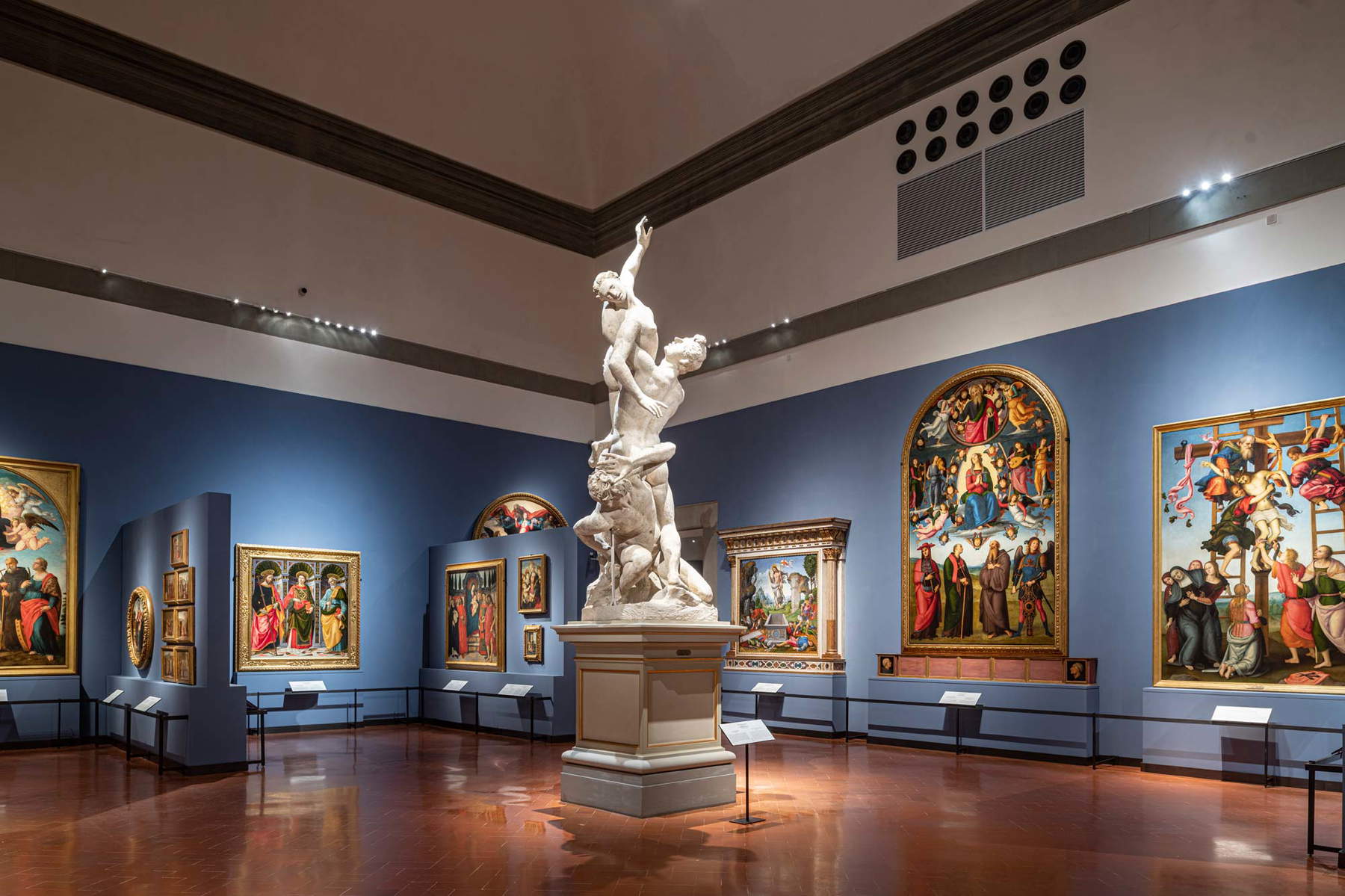



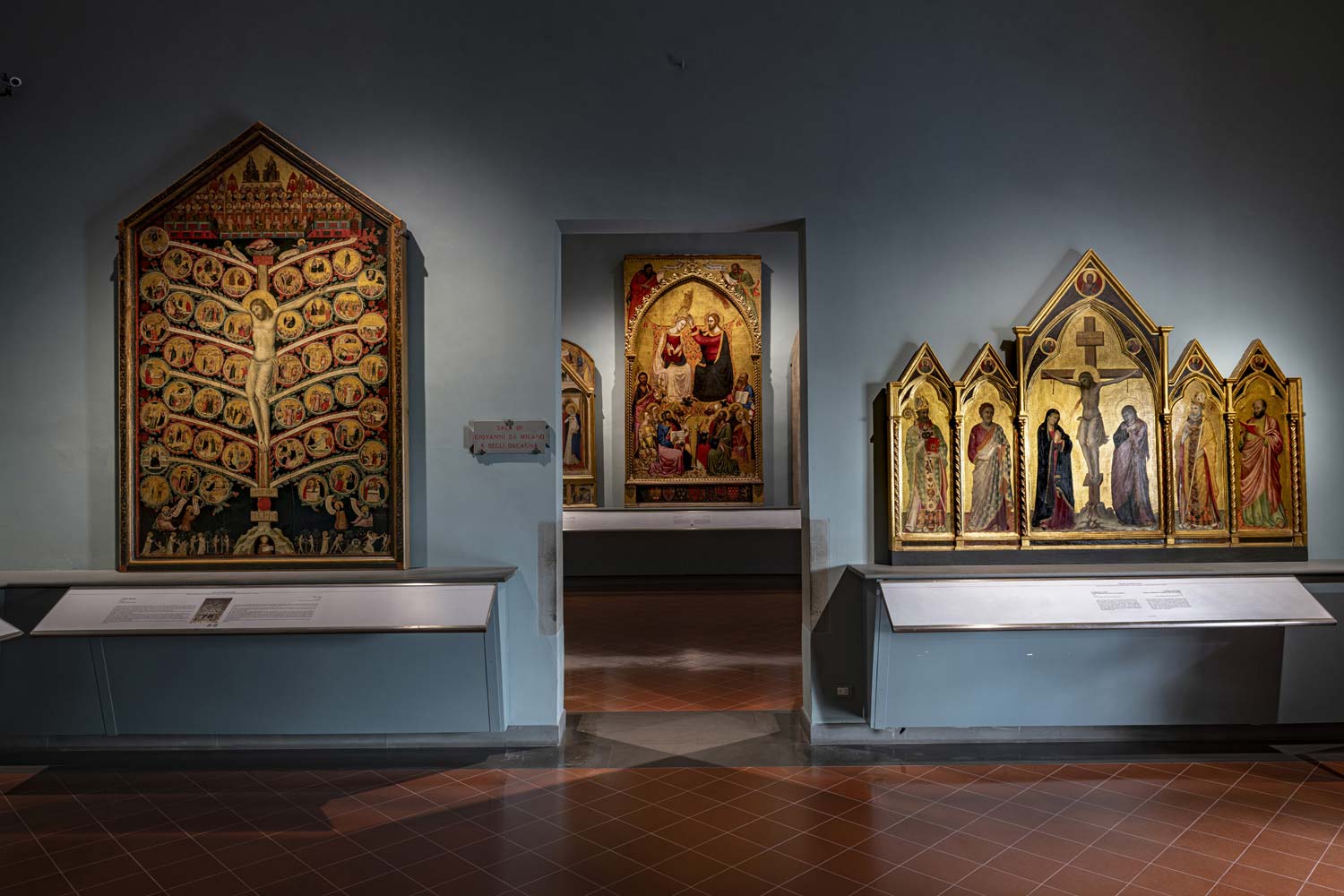
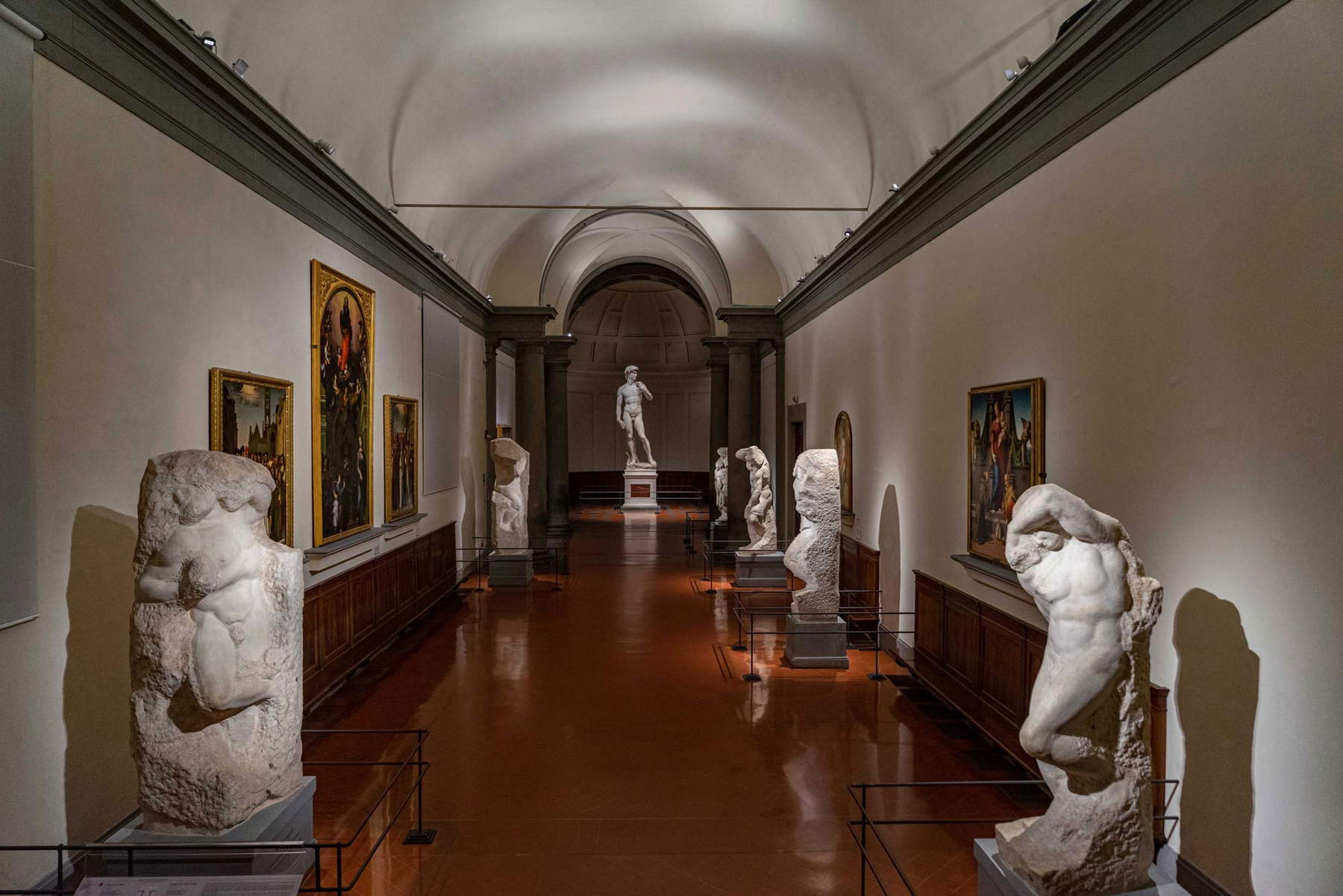
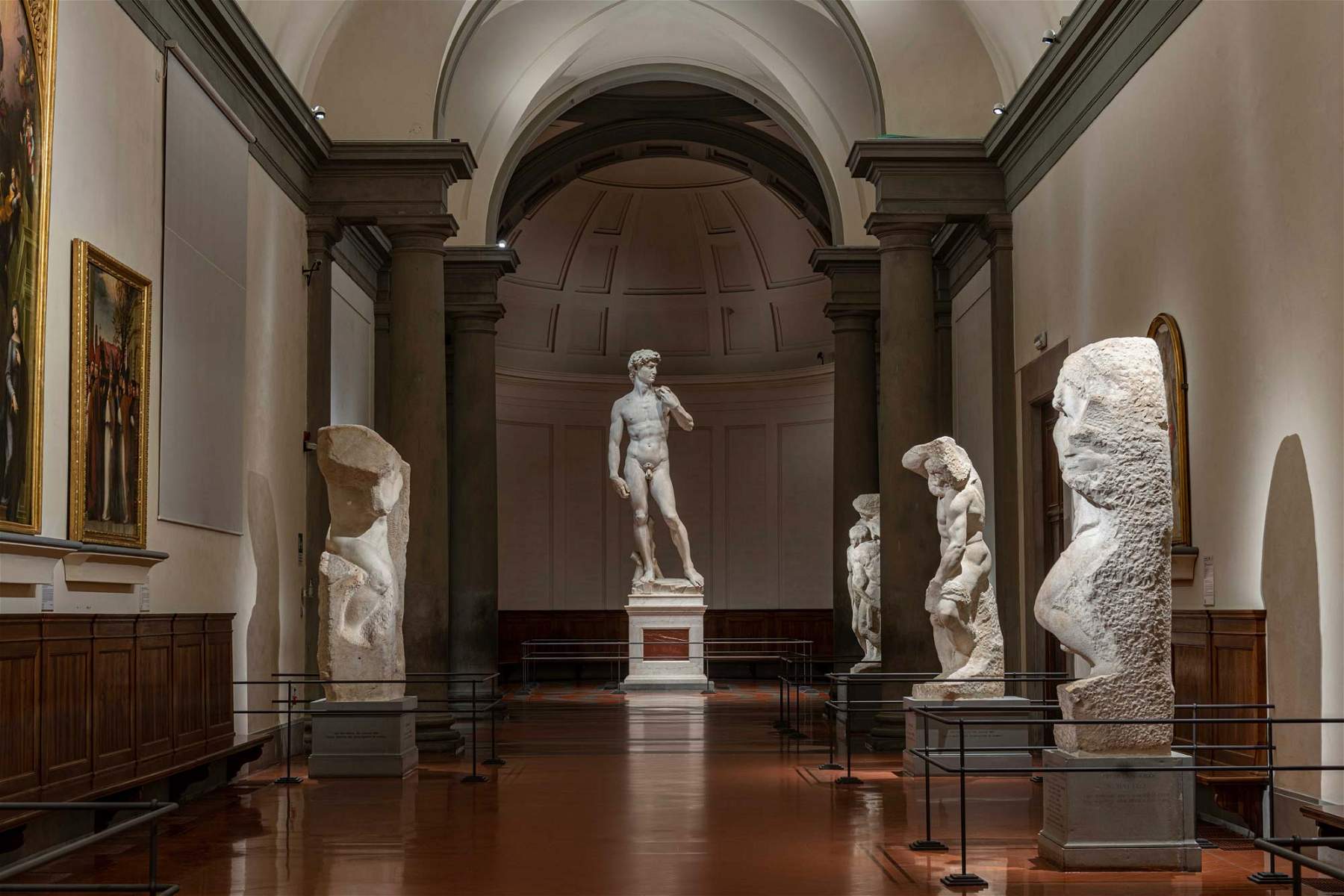

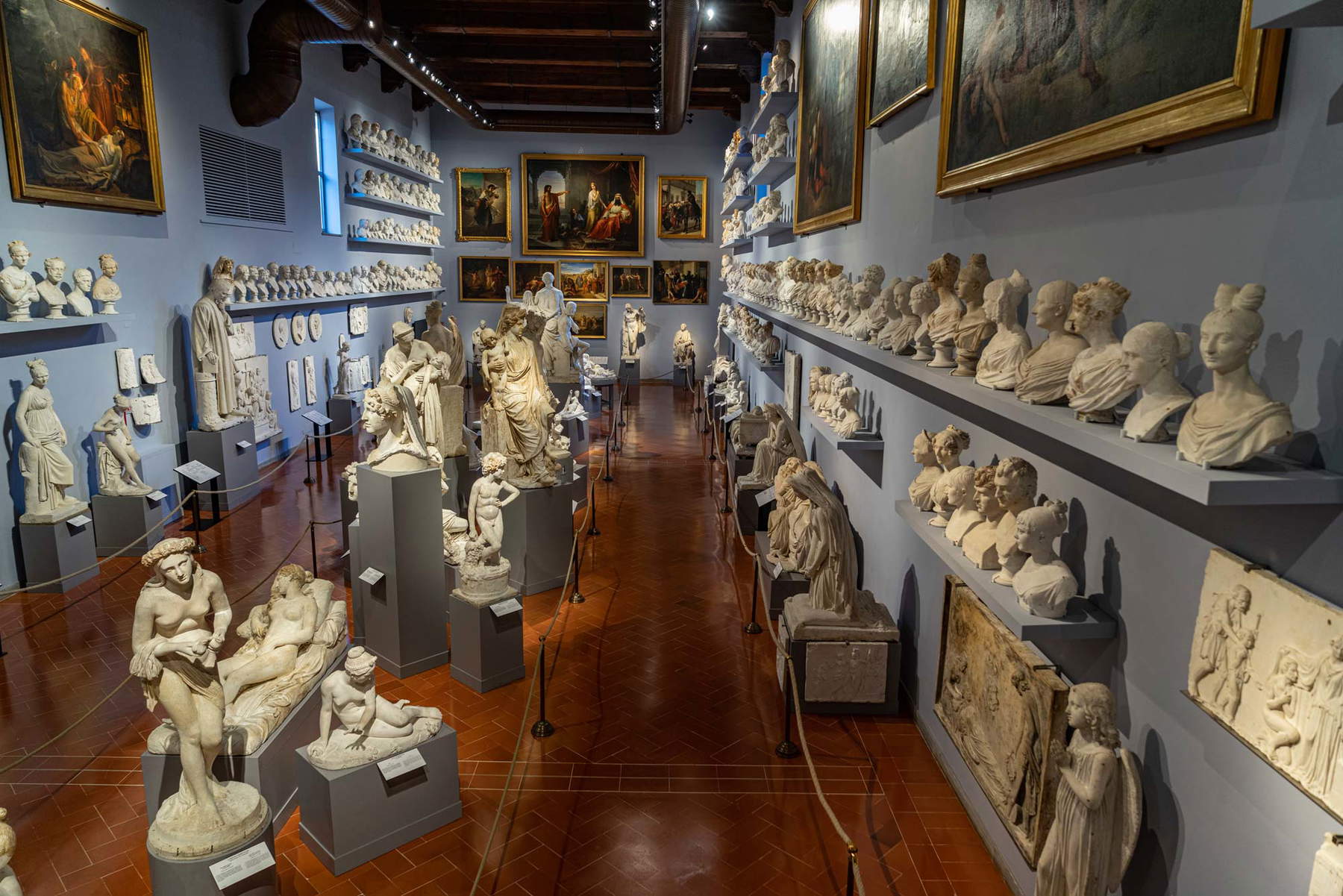


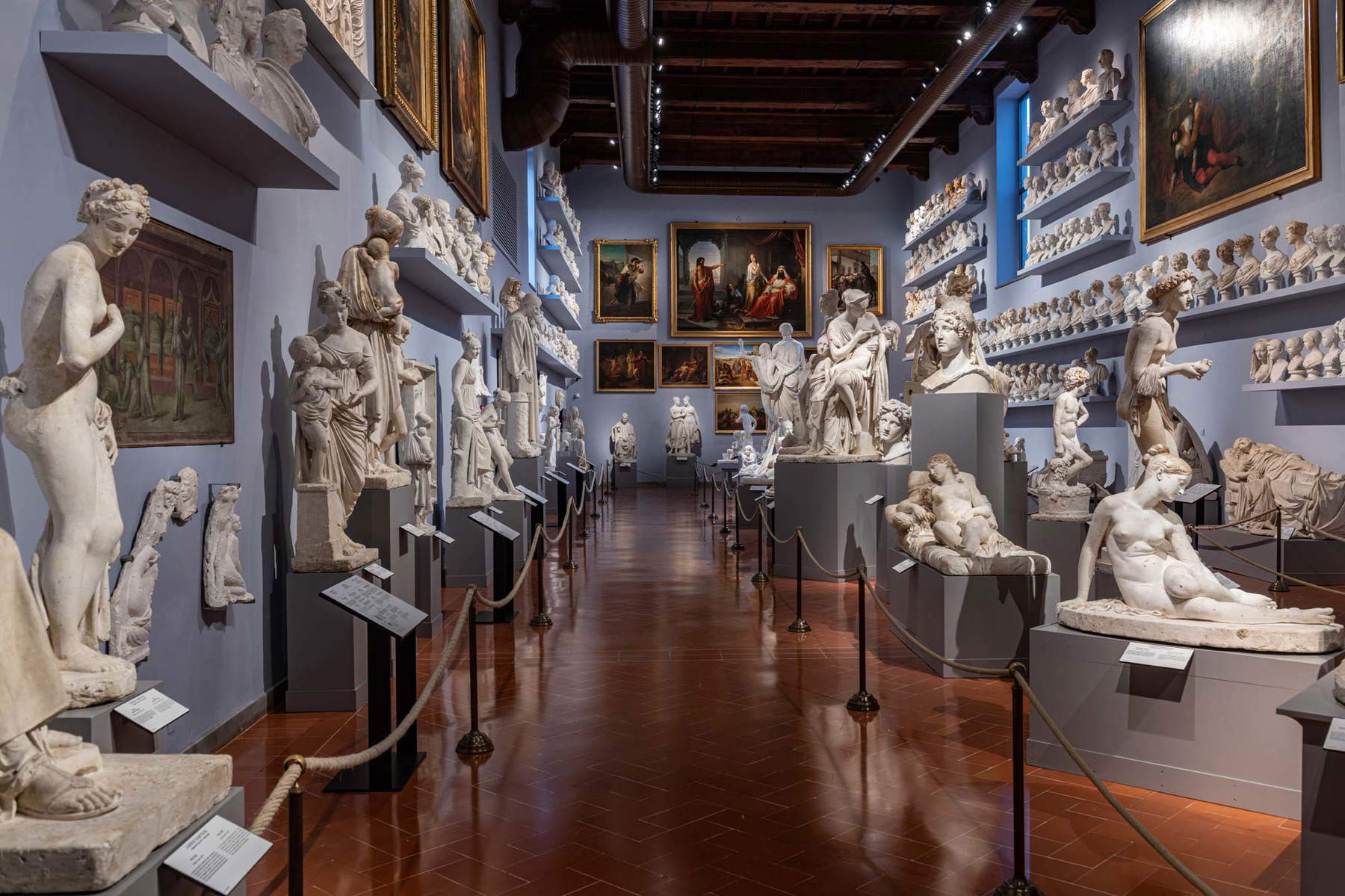

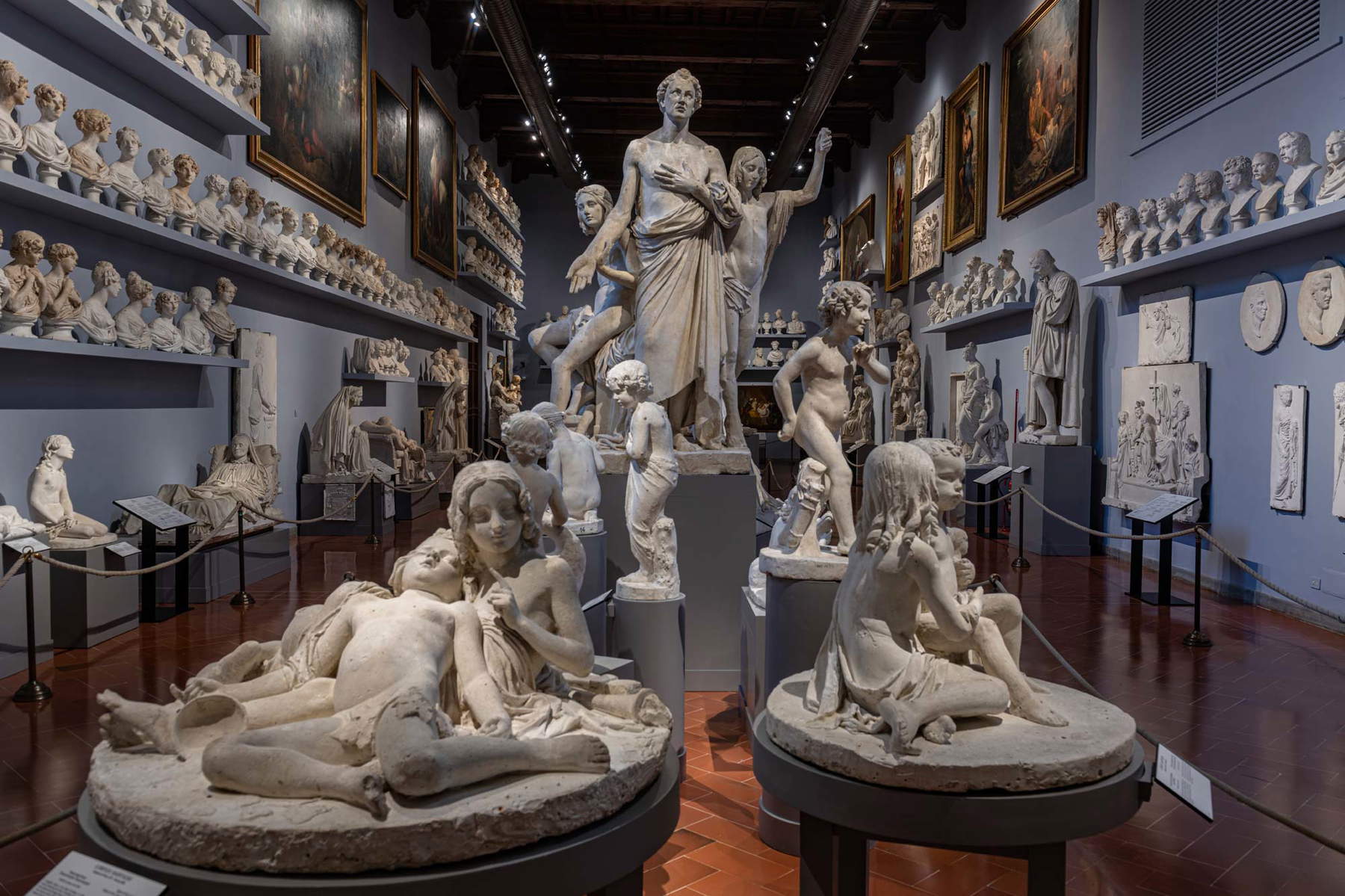
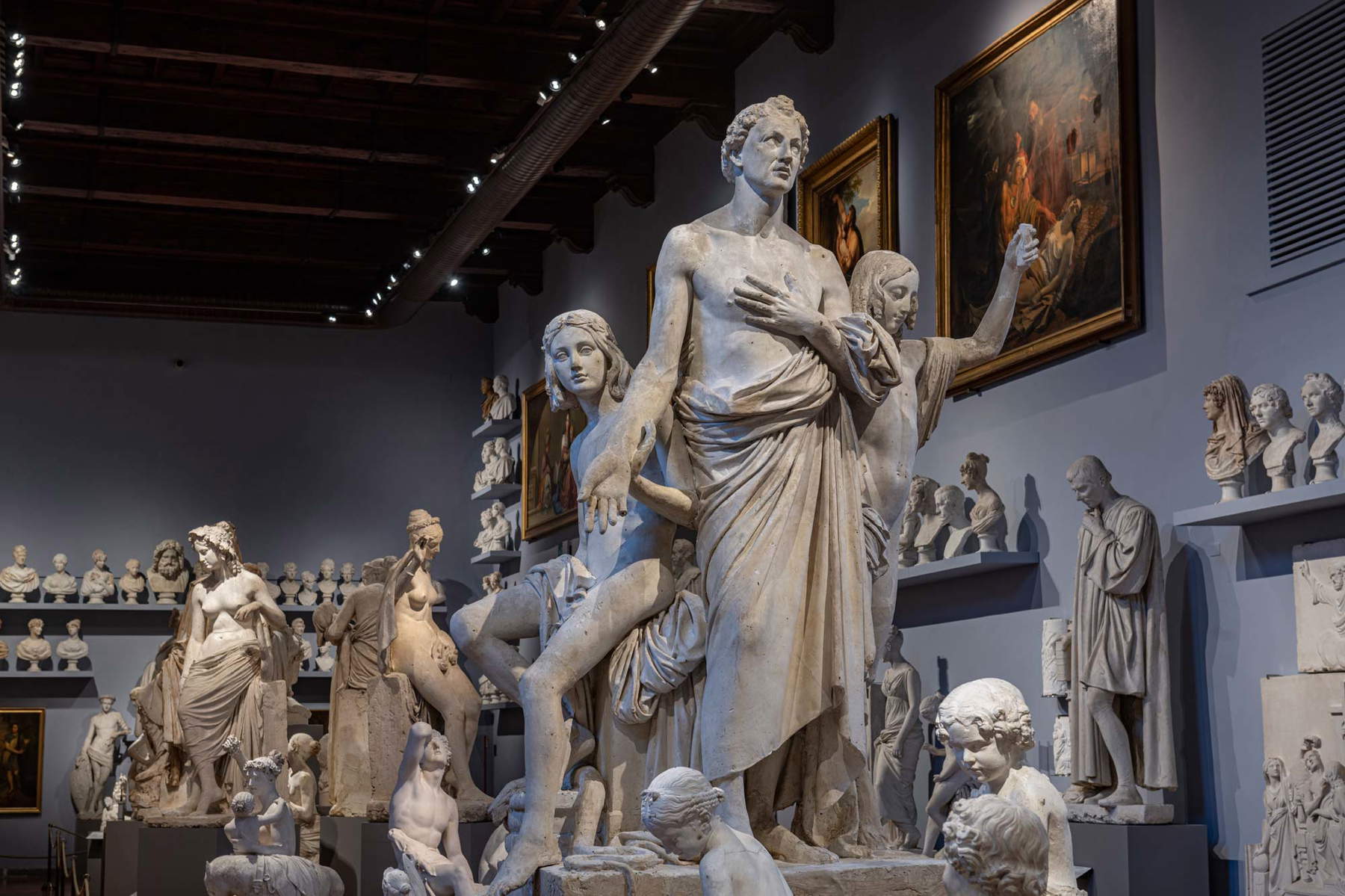
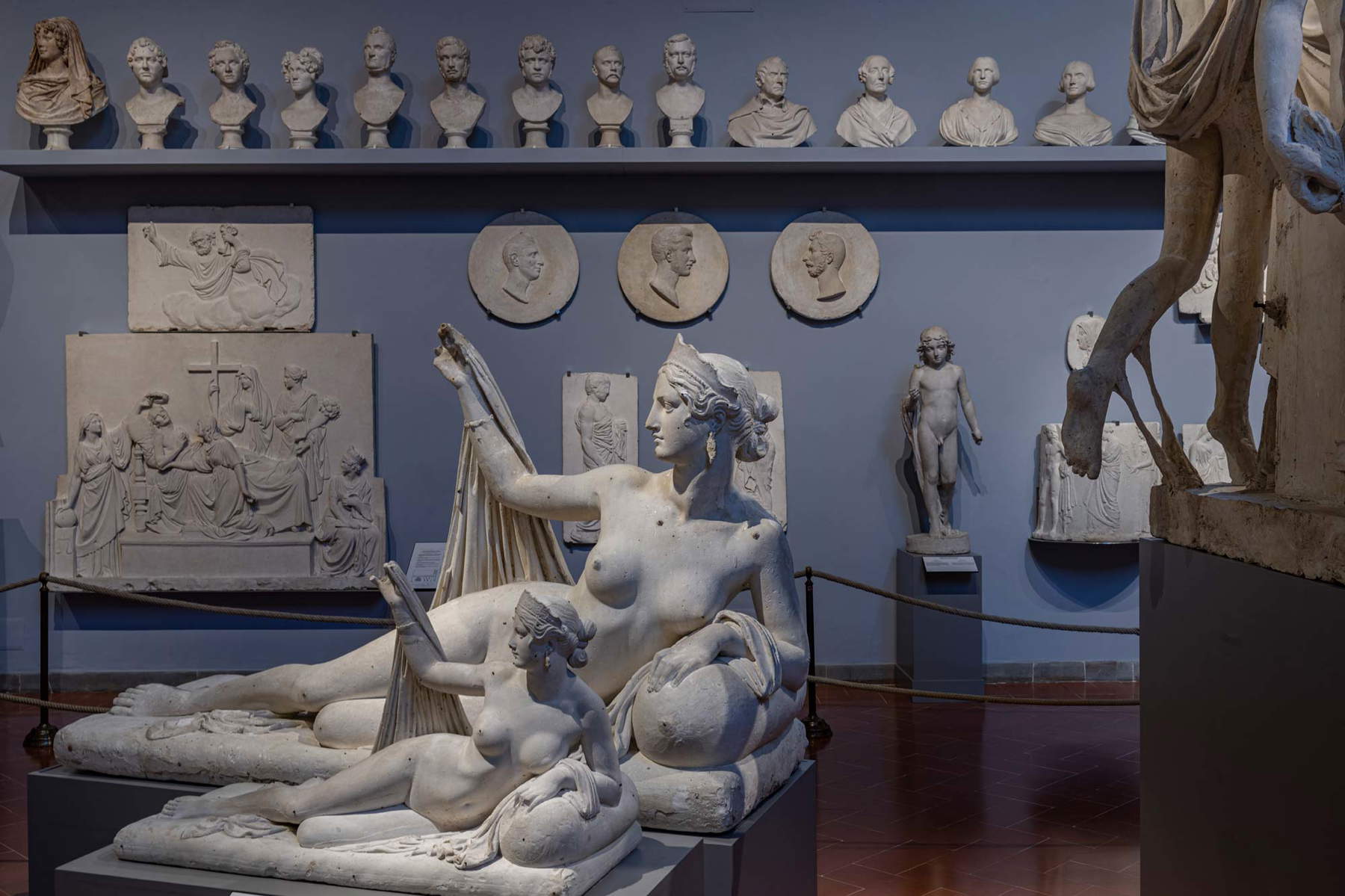
“The Gipsoteca is the latest invaluable piece in the renewal process of the Galleria dell’Accademia in Florence,” says Cecilie Hollberg. “a task entrusted to me by the Franceschini reform, namely to ferry from the 19th century into the 21st century an unprecedented and modern Gallery. An enormous undertaking that we were able to accomplish thanks to the heartfelt and unwavering efforts of our very small staff and all those who supported us. Despite the many setbacks, due to the suspension of autonomy, the pandemic crisis, and the various critical issues of the structure encountered during the course of construction, we managed to pull off the miracle. The layout of the Gipsoteca has been rearranged and modernized in full respect of the historical one, and I thank my friend Carlo Sisi for his valuable advice. The plaster casts, restored and cleaned, are enhanced by the light powder blue of the walls, so much so that they seem alive, with their lives, their stories. The result is magnificent! We are proud and happy to be able to share it from now with everyone.”
“The reopening of the Gipsoteca is an important step in the journey undertaken since 2016 to bring the Accademia Gallery in Florence, one of Italy’s most important and visited state museums, into the 21st century,” says Culture Minister Dario Franceschini. “The works, concerning the entire building, have allowed significant innovations in the facilities, making modern, without distorting it, a museum conceived in the second half of the 19th century. All this has been made possible by the passion, dedication and professionalism with which Director Hollberg and the entire staff of the Gallery have worked since the establishment of the autonomous museum in 2015, amidst a thousand difficulties and interruptions due to the pandemic. I therefore wish every success to this day of celebration for the Academy Gallery and extend my sincere congratulations to all those who have worked to achieve this important result.”
“That of the Accademia Gallery’s Gipsoteca,” stresses Carlo Sisi, President of the Accademia di Belle Arti di Firenze, “is an exemplary restitution, which in respecting the previous arrangement conceived by Sandra Pinto in the 1970s is configured as a true critical act, a museum operation that preserves a crucial episode of national museography while renewing with methodological intelligence its compositional structure and the grace of its details. In fact, the new color chosen for the walls makes it possible to recover the correct reading of the works, now exhibited in their entirety, and the removal of the obsolete conditioners makes it possible to admire the sequence of the works without disturbing interruptions, but with the ’poetic’ continuity that can finally draw the visitor into what in the nineteenth century was called the adventure in the atelier.”
 |
| Florence, museum renovation work ends at Accademia Gallery |
Warning: the translation into English of the original Italian article was created using automatic tools. We undertake to review all articles, but we do not guarantee the total absence of inaccuracies in the translation due to the program. You can find the original by clicking on the ITA button. If you find any mistake,please contact us.